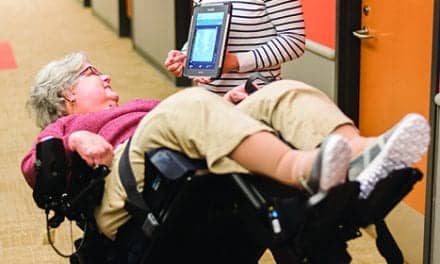Targeted electrical spinal cord stimulation could stabilize blood pressure in people with spinal cord injury (SCI), researchers suggest, in a study published in Nature.
Aaron Phillips, PhD, at the University of Calgary’s Cumming School of Medicine (CSM) and Grégoire Courtine, PhD, at Swiss Federal Institute of Technology (EPFL) , co-led the international study, which suggests that spinal cord stimulators can bridge the body’s autonomous regulation system, controlling blood pressure without medication.
“The spinal cord acts as a communication line allowing the brain to send signals to tell the body such as when and how to move, as well as how to control vital functions, including blood pressure. This communication line is broken after a spinal cord injury. We created the first platform to understand the mechanisms underlying blood pressure instability after spinal cord injury, which allowed us to develop a new cutting-edge solution.”
— Aaron Phillips, PhD
Exact Placement, Circuitry of EES Discovered
In the study, targeted epidural electrical stimulation (EES) of the spinal cord was used to stabilize hemodynamics (blood flow throughout the body), allowing for vital organs to maintain an appropriate supply of blood. The researchers discovered the exact placement on the spine for their stimulator, and the circuitry of the sympathetic nervous system underlying blood pressure control. This new knowledge allowed for the development of a neuroprosthetic closed-loop communication system, to replace lost hemodynamic control, a media release from University of Calgary explains.
Richi Gill, MD, who broke his neck in a boogie board accident, is the first study participant in a series of clinical trials planned for Calgary and Switzerland, per the release.
Getting mobile again with the use of a wheelchair is the first thing most people notice. However, for those with a SCI, what is happening inside the body also severely affects their quality of life, Gill explains.
“What many people don’t realize is that a spinal cord injury prevents some systems within the body from regulating automatically. My blood pressure would drop drastically, leaving me fatigued, dizzy, and unable to focus. The condition can be life threatening, requiring medication for life.”
Collaborating with ONWARD
The researchers are collaborating with ONWARD to develop a neurostimulation system dedicated to the management of blood pressure in people with spinal cord injury, they note in the release.
“We used similar concepts and technologies to restore walking after paralysis and are now pleased to leverage those advances to address this very common but serious effect of SCI. We look forward to working with ONWARD to conduct clinical trials in humans so this approach can be translated into a viable therapeutic option for people with SCI.”
— Grégoire Courtine, PhD, in a separate release from ONWARD
This research will be further advanced by a $36 million contract granted by the United States Defense Advanced Research Project Agency (DARPA) for a five-year project to develop neurotherapeutics that bridge the gap between the spinal cord and the brain after spinal cord injury. The DARPA contract enables an alliance of 12 institutions around the world that includes EPFL, University of Calgary and ONWARD to conduct groundbreaking research in the pursuit of new therapies for spinal cord injury, per the ONWARD release.
[Source(s): University of Calgary, ONWARD, EurekAlert, Business Wire]
Related Content:
Could This Change the Way Blood Pressure in SCI Patients is Managed?
Blood Pressure Med Puts Stop Sign in Front of Post-SCI Spasticity
Epidural Stimulation Demonstrates Ability to Normalize Blood Pressure in SCI Patients





